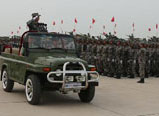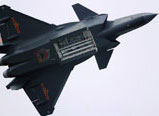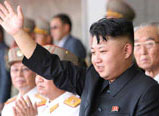
SHENYANG, July 27 (Xinhua) -- China on Saturday began to send military personnel and armaments to Russia, where they will join 20-day joint anti-terrorism drills held by both parties.
The transfer of Chinese troops for the exercise will be completed by Aug. 2, according to Zhang Yan, deputy commander of the 646 Chinese military personnel participating in the drills.
The Chinese officers and soldiers will be sent to the drill venue in seven batches, with four traveling by air and three by train, Zhang said.
With 72 people on board, two Mi-171 military transport helicopters and four Z-9 armed helicopters from the Chinese side took off from an airport in Hailar in northern China's Inner Mongolia Autonomous Region on Saturday morning.
They will travel more than 5,000 km with several stopovers and are expected to arrive at the drill venue in five days.
In addition, 119 officers and soldiers set out by train at noon on Saturday from the border city of Manchuri in Inner Mongolia. And two other trains are expected to leave later on Saturday and Sunday respectively, carrying more soldiers.
According to the schedule, five fighter-bomber JH-7A jets will set out from an airport in Urumqi in northwest China's Xinjiang Uygur Autonomous Region on July 31 and are expected to arrive in Russia the same day.
The exercises, dubbed "Peace Mission 2013" and scheduled to run from July 27 to Aug. 15, will be carried out in Chelyabinsk in Russia's Ural Mountains region.
The Chinese troops attending the drills include an infantry combat group of 350 people, an air force combat group of 50 people, a logistics group with 196 people, a 20-member planning panel, and a 30-member command.
The 600 troops from Russia are of similar composition.
The drills will be held in three phases, including troop deployment, war planning and campaign drills.
The joint drills are not targeting any third party, and are meant to enhance mutual trust and pragmatic cooperation between the two armed forces, and improve their capability to combat terrorism, according to their Chinese command headquarters.
















 Working under 40 degrees Celsius
Working under 40 degrees Celsius


![]()
